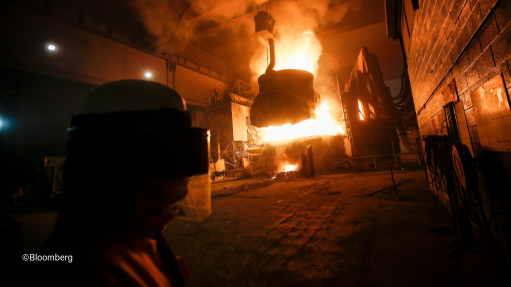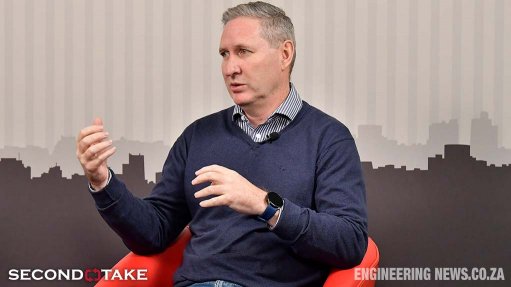UK creating regulatory framework for nuclear fusion plants – simpler, easier, than for fission
The UK Government has initiated the consultation process for its proposed policy to regulate the siting of commercial nuclear fusion reactors in England. (Siting policies for Scotland, Wales and Northern Ireland are the responsibility for their respective devolved regional governments.) The UK Department for Energy Security & Net Zero has done so by publishing a document, 'Consultation on a new National Policy Statement for Fusion Energy – The proposed approach to siting fusion energy facilities'.
This follows the passing, by the UK Parliament last year, of the world’s first legislation (the Energy Act) to regulate commercial nuclear fusion power plants. These steps reflect the rapid scientific, technological and engineering progress now being made in the field of nuclear fusion.
“The commercialisation of fusion energy is accelerating,” points out the Department, in the document. “The industry has attracted over $6-billion in investment internationally to date, a figure that is $1.4-billion more than in 2022. Both public and private sector fusion organisations worldwide are designing prototype fusion power plants, with some organisations planning to start construction before the end of the decade.”
All current nuclear reactors are fission reactors. They generate energy by splitting atoms. Nuclear fusion is a totally different technology, which generates energy by fusing atoms, usually hydrogen (the lightest and simplest atom there is), to form heavier atoms while also releasing huge amounts of energy. Usually, fusion involves use of two isotopes (varieties) of hydrogen, namely deuterium and tritium. Fusing a deuterium atom and a tritium atom creates a helium atom, and releases a neutron as well as a great amount of energy.
In technological and engineering terms, fusion is much more difficult to do, on a sustained, controlled basis, than fission is. But fusion has huge advantages over fission. The fuel is abundant (deuterium can be extracted from seawater, tritium produced from lithium) and non-radioactive. It produces the greatest energy, per gram of fuel, than any other process that can be implemented on the Earth. Fusion does not involve a chain reaction; switch a fusion reactor off, and the process stops itself in mere seconds. There is no spent fuel left, to dispose of. There will be no very long-life nuclear waste produced by fusion. And the fusion reaction produces no greenhouse-gas emissions of any kind.
A key aspect of the 2023 Energy Act is that fusion energy facilities will not be treated as nuclear installations in the UK. “[T]he Government has made clear that fusion will not be subject to a nuclear site licensing process in the same way as nuclear fission facilities due to the fundamental differences in technology, process and levels of hazard,” states the document. “[T]he Government proposes fusion should not be covered by a fission or any other energy NSP [National Policy Statement].”
Instead, fusion will have its own, separate, NPS, to give planning authorities, developers and regulators “bespoke, effective and clear guidance”. Fusion policy is proposed to be “open-sited and technology inclusive” regarding the location of new fusion energy plants. The Government is committed to support all fusion technologies, to underpin the creation of a British fusion industry. The policy will include fusion facilities intended to produce high-grade heat, as well as those focused on generating electricity.
The UK Government will not itself identify any sites for future fusion energy facilities, because this “would be unnecessarily restrictive” both in terms of stimulating technological innovation and in providing opportunities to local communities. “[T]he hazards and risks of fusion are not of the same magnitude as fission and are more similar to other hazardous facilities such as chemical plants”.
Comments
Press Office
Announcements
What's On
Subscribe to improve your user experience...
Option 1 (equivalent of R125 a month):
Receive a weekly copy of Creamer Media's Engineering News & Mining Weekly magazine
(print copy for those in South Africa and e-magazine for those outside of South Africa)
Receive daily email newsletters
Access to full search results
Access archive of magazine back copies
Access to Projects in Progress
Access to ONE Research Report of your choice in PDF format
Option 2 (equivalent of R375 a month):
All benefits from Option 1
PLUS
Access to Creamer Media's Research Channel Africa for ALL Research Reports, in PDF format, on various industrial and mining sectors
including Electricity; Water; Energy Transition; Hydrogen; Roads, Rail and Ports; Coal; Gold; Platinum; Battery Metals; etc.
Already a subscriber?
Forgotten your password?
Receive weekly copy of Creamer Media's Engineering News & Mining Weekly magazine (print copy for those in South Africa and e-magazine for those outside of South Africa)
➕
Recieve daily email newsletters
➕
Access to full search results
➕
Access archive of magazine back copies
➕
Access to Projects in Progress
➕
Access to ONE Research Report of your choice in PDF format
RESEARCH CHANNEL AFRICA
R4500 (equivalent of R375 a month)
SUBSCRIBEAll benefits from Option 1
➕
Access to Creamer Media's Research Channel Africa for ALL Research Reports on various industrial and mining sectors, in PDF format, including on:
Electricity
➕
Water
➕
Energy Transition
➕
Hydrogen
➕
Roads, Rail and Ports
➕
Coal
➕
Gold
➕
Platinum
➕
Battery Metals
➕
etc.
Receive all benefits from Option 1 or Option 2 delivered to numerous people at your company
➕
Multiple User names and Passwords for simultaneous log-ins
➕
Intranet integration access to all in your organisation


















